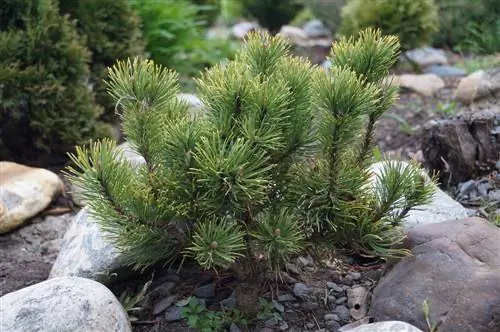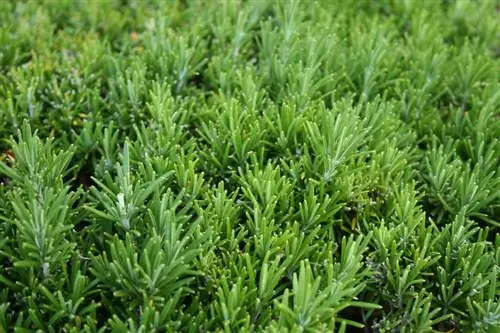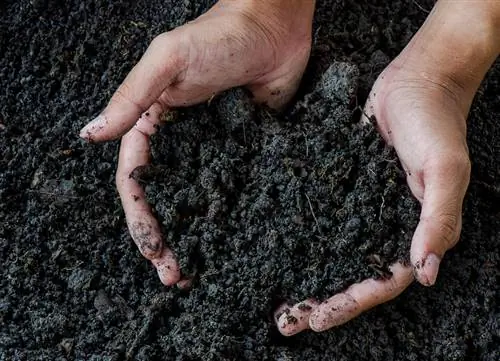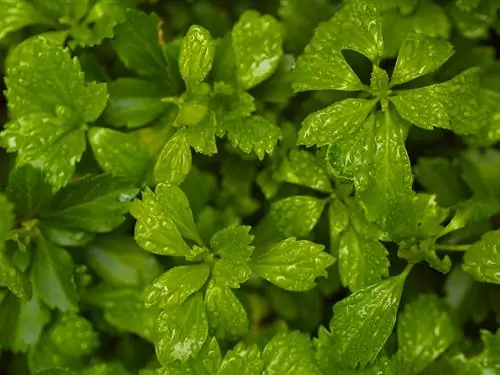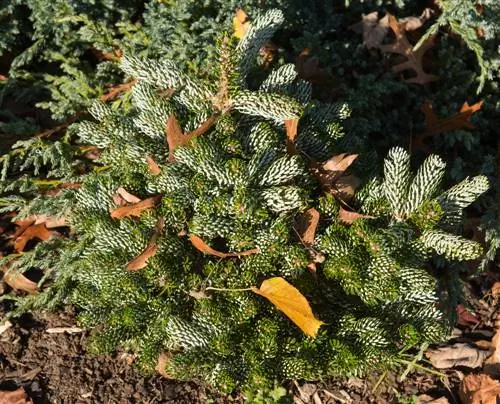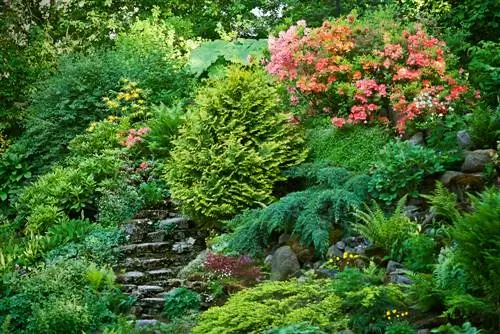- Author admin [email protected].
- Public 2023-12-16 16:46.
- Last modified 2025-06-01 06:02.
Fertilizing a conifer or hedge should be done with a sense of proportion. Coniferous trees are very sensitive not only to a lack of nutrients, but also cannot tolerate over-fertilization. For this reason, a professional soil test should be carried out before resorting to fertilizer.
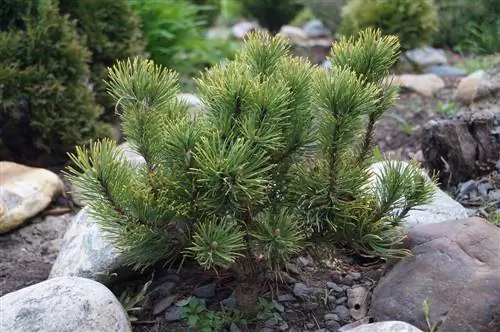
How do you fertilize conifers properly?
In order to properly fertilize conifers, you should first have a soil test carried out. If necessary, use special conifer fertilizer or Epsom s alt, make sure to fertilize between March and July and fertilize potted plants regularly.
The soil sample is taken before fertilization
Sometimes the conifer's needles turn brown to indicate that it is lacking nutrients - often magnesium. Just as often, there can be another cause behind it, which is why needle loss cannot always be stopped with the administration of Epsom s alt or lime. However, a professional soil test can at least provide clarity in this regard, and you will also receive a detailed fertilizer recommendation. You send such a soil sample to either state or private soil testing centers. The former are usually subordinate to the chambers of agriculture. However, if you suspect that the soil is too acidic, a simple pH test (€4.00 on Amazon) from the pharmacy will help - and then, if the suspicion is confirmed, fertilization with lime.
Fertilizing coniferous trees - this is how it works
A wide variety of fertilizers are available for fertilizing conifers. However, coniferous trees in the garden only need fertilizer if the soil testing institute actually recommends it. Many garden soils today are over-fertilized rather than under-fertilized, which is why fertilization is often not entirely necessary for planted trees or hedges. You should only fertilize regularly with coniferous trees in pots, as they cannot take care of themselves.
Plant fertilization
Usually a good idea is so-called plant fertilization, in which you add mature compost and horn shavings or horn meal to the excavation. This booster fertilization often improves soils that are too dense/too lean, loosens them up and supports the plant in growing.
Special conifer fertilizers
So-called conifer or fir fertilizer has proven itself in the supply of both planted and potted conifers. The commercially available product is tailored precisely to the needs of coniferous trees and can of course also be used for hedges. However, fertilization should only be carried out between March and the end of July so that young shoots can mature in time before winter. However, if you fertilize for too long, the trees keep growing new shoots that freeze back in winter.
Epsom S alt
This is a special magnesium fertilizer that can only be administered if there is a proven deficiency. Yellow or brown needles rarely indicate a magnesium deficiency - as a result of an overdose, a potassium deficiency often occurs, which in turn also causes brown needles.
Tip
Liquid fertilizers that are administered with irrigation water are particularly suitable for potted plants. This way you can quickly get to the roots.

